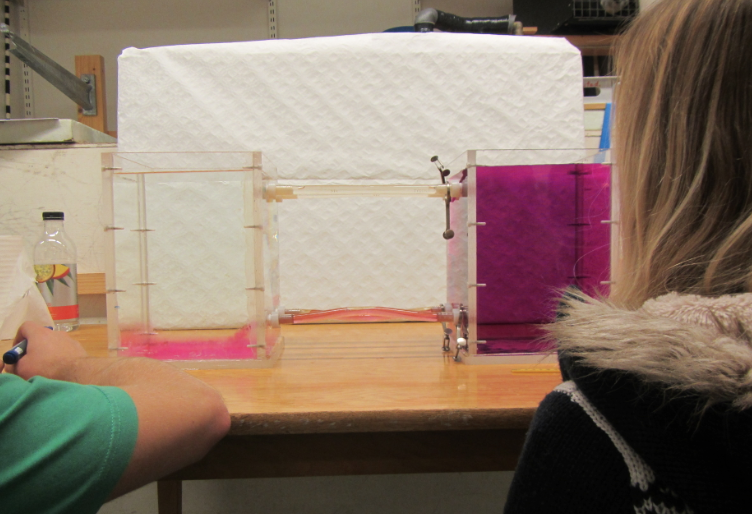
Interference from other demonstrations.
Why interpreting one aspect Marsigli’s experiment might be so difficult.
Remember how, in this post, I discussed Marsigli’s experiment and asked why the volume of pink water seemed to have increased in the end? I think the reason students have such a hard time answering that question might be related to dimension 3 “interference from other demonstrations” in the Roth et al. (1997) paper on 6 dimensions that might hinder student learning from demonstrations (discussed in this post).
In the experiment itself, there is really nothing mysterious happening – we are not creating or destroying water. All that happens is easily observable if one knows what one is looking for:
We have both pink water mixing into clear, and clear water mixing into pink. The product of both processes is pink water. The interface between clear and pink is always much more easily observable than that between more pink and less pink, hence, most of the mixing products are counted towards pink: we seem to have increased the pink volume.
However this is apparently not straight forward to understand. One reason, that only occurred to me today, is that there might be interference with other observations. Before running this experiment, I’ve always shown experiments where mixing was negligible, or, in some cases, even specifically prohibited. Examples are internal waves showed at a really strong salinity interface, or at the interface between water and oil. In the latter case, the bottle is often even shaken, and water and oil never mix (or only for a very short time). Yet all I am focussing on when showing the internal wave experiment are the internal waves, not the absence of mixing. Of course, students should know that water and oil don’t mix, and I am sure that at some point I point out that it is water and oil in the bottle. But the focus of my discussions is clearly on the different densities across the interface. So I can see how mixing might not be the first thing that comes to the students’ minds in the context of recent oceanography experiments. A case of interference from other experiments making the interpretation of this one more difficult than it needs to be?
Share this post via
